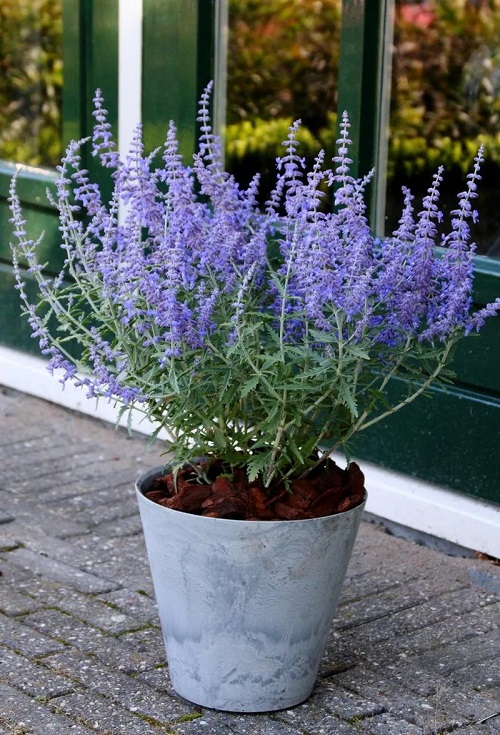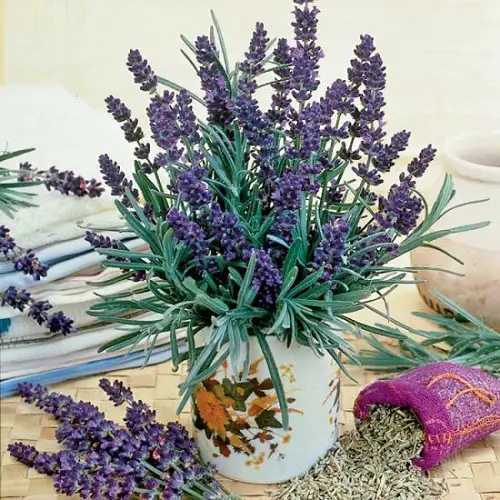Russian Sage vs. Lavender – Plant showdown of the aromatic herbs! Read on to learn about their unique flavor, usage, and more!
The fragrance of Russian Sage and Lavender plants travels with the breeze, and you usually smell them before you see them. Both herbs are famous for their unique scent and attractive flowers that look beautiful in any garden. However, if you still need help choosing both, here is our guide on Russian sage vs. Lavender.
Read in detail about Cilantro vs. Culantro
What is Russian Sage?

Russian Sage is a hardy, aromatic perennial plant with silver-gray foliage and tall spikes of lavender-blue flowers. It thrives in sunny, well-drained gardens, attracting butterflies and bees. Easy to care for, it adds a touch of beauty and fragrance to gardens, making it a popular choice for landscaping.
Check out the best Russian flowers
What is Lavender?

Lavender is a fragrant herb known for its slender stems, narrow leaves, and clusters of small, aromatic purple flowers. Widely used in gardens, it’s prized for its soothing scent and diverse uses, from aromatherapy to culinary applications. Lavender is also attractive to pollinators like bees and butterflies.
Is It Possible To Grow Lavender In Tropics?
Russian Sage vs. Lavender

Whether you’re a fan of the Russian Sage or the delicate and fragrant Lavender, you’re sure to have a garden that’s the envy of all your neighbors. So, go ahead, pick your poison, and enjoy the beauty of these two stunning plants!
- Climate: Russian sage is more robust and drought-tolerant than Lavender, making it a better choice for hot, dry climates. Lavender, on the other hand, prefers cooler temperatures and may struggle in extremely hot or humid conditions.
- Soil: Both plants prefer well-drained soil, but Lavender is more particular about soil pH and may require more attention to ensure optimal growth.
- Appearance: Russian sage has taller, airier spikes of blue or purple flowers, while Lavender has shorter spikes of highly fragrant flowers in shades of blue, purple, pink, or white. Both are attractive in their own right, but the appearance of the flowers is an important consideration.
- Uses: Both plants have a range of uses, but Lavender is more commonly used in products such as perfumes, soaps, and essential oils, while Russian sage is used primarily as an ornamental plant.
- Maintenance: Russian sage is a low-maintenance plant that requires minimal pruning, while Lavender may require regular trimming to keep it from becoming leggy.
Find the Differences between Coconut and Palm Trees
Conclusion
In conclusion, Russian Sage and Lavender are both popular garden plants, each with unique characteristics. Russian Sage, with its silver-gray foliage and tall blue spikes, offers hardiness and low maintenance.
Lavender, known for its slender stems and purple blooms, is prized for its versatile uses. Choosing between them depends on personal preferences, garden conditions, and desired functions, as both contribute beauty and fragrance to landscapes.



What is the difference between Russian Sage and Mexican Sage?